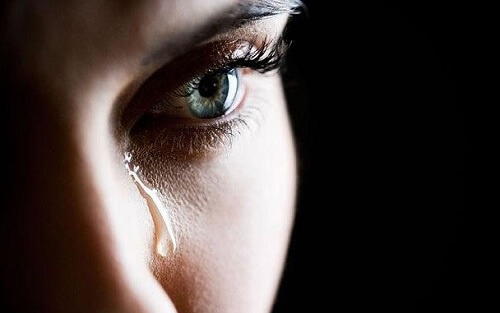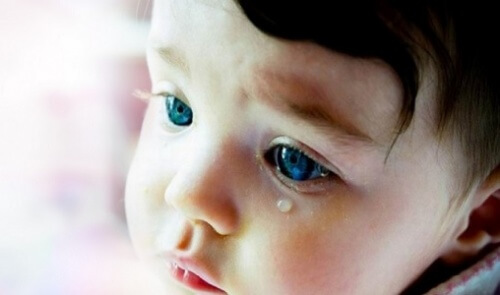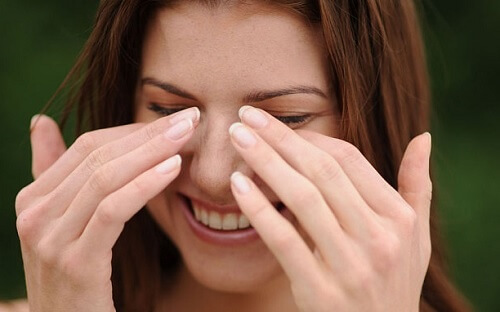Things You Didn't Know About Tears and Crying

Crying is a physiological process for all living creatures. However, it’s different when humans shed tears. We are the only ones who cry to demonstrate different emotions. In this article, we’ll be sharing some of the curiosities of tears and crying.
Tears and crying is good for your health
For years, tears and crying have been considered a sign of weakness and even manipulation.
When you’re sad you can express it with tears. This happens because your body releases different chemicals. These substances act as a natural calming agent. In other words, they lessen the amount of pain you feel.
When you weep, your body enters a state of calmness. This is because your body releases oxytocin after crying; this chemical acts as a natural anesthetic. Even though it may not happen often, crying is important. It protects the mucous membranes in your eyes from getting dehydrated, and this helps to keep your eyes in perfect condition.
Another important factor is their cold fighting abilities. Tears can kill some bacteria, which is thanks to a fluid called lysozime. To sum up, crying is actually a very positive things. It helps to keep you healthy and your body functioning properly.
Are happy and sad tears the same?

Scientists put tears into three categories:
Basic tears
These are the tears that keep your cornea permanently dry. These lubricate your eyes, and also keep your eyes clean. Under normal circumstances, a person sheds one-fifth of a teaspoon of tears a day. Over time, this amount can increase or decrease.
Read more: 7 Reasons Why Crying is Good for You
Reflexive tears
These are a result of some irritation. They are caused by foreign objects or the presence of irritating substances. Anything can cause this kind of tear, but the most common causes are onions, tear gas, paint vapors, and corrosive chemicals.
The purpose of these tears is to clean foreign objects from your eyes.
Emotional tears
These are the tears that are based on feelings. The feeling can be anything: happiness, sadness, anger, fury, etc.
Crying after sex
Many people feel like crying after reaching orgasm. There isn’t a consensus in the scientific community to explain this phenomenon. However, some believe that crying after sex is directly related to the hormonal fluctuation sex causes.
Others are inclined to say it is a psychological reaction. They say it can be for many reasons, such as:
- The sensation of reaching climax.
- Guilt when they are cheating on someone.
- Sadness caused by being in a bad relationship.
If you always have this reaction, maybe you should analyze your relationship. You should see if your relationship is really making you happy or not.
If you’re crying because you’re happy, then all is well. But, if it’s due to unhappiness, you should take a moment to consider your relationship. Think about whether it is worth it to stay with this person.
Read more: The 7 Most Popular (And Fake!) Sex Myths
Men don’t cry as much as women

People usually think that women cry more than men. There are even studies that claim to show that women cry four times more often than men!
This is due to the hormone prolactin. This hormone can cause a person to cry, and is mostly present in women’s blood and tears. On the other hand, a woman’s tear ducts has a different structure to a man’s. This makes it easier for women to cry.
Animals also cry
Animals also have the ability to cry. In some mammals and humans, it is connected with the reward center in the brain. However, humans shed tears based on emotion. In other words, it’s impossible for animals to shed tears that have a deeper emotional meaning. They are only a result of a functional necessity.
Tears and their interesting properties

There are several “emotional” causes of tears and crying. These can be to relieve stress and show empathy and compassion, and also when we feel pain, cry out for attention, and show happiness. Tears have the same physiological reaction. It doesn’t matter if scientists classify them as being caused by irritation or not.
What we do know is that tears provide an important function. They protect your eyes.
All cited sources were thoroughly reviewed by our team to ensure their quality, reliability, currency, and validity. The bibliography of this article was considered reliable and of academic or scientific accuracy.
- McDermott, Alison M. (2013). Antimicrobial Compounds in Tears. https://www.ncbi.nlm.nih.gov/pmc/articles/PMC3844110/
- Smithsonian Mag. (2013). The Microscopic Structures of Dried Human Tears. https://www.smithsonianmag.com/science-nature/the-microscopic-structures-of-dried-human-tears-180947766/
- American Pysichological Association. (2014). Why we cry. https://www.apa.org/monitor/2014/02/cry
- Vingerhoets,Ad J. J. M. van de Ven, Niels. van der Velden, Yvonne. (2016). The social impact of emotional tears. https://www.ncbi.nlm.nih.gov/pmc/articles/PMC4882350/
This text is provided for informational purposes only and does not replace consultation with a professional. If in doubt, consult your specialist.








